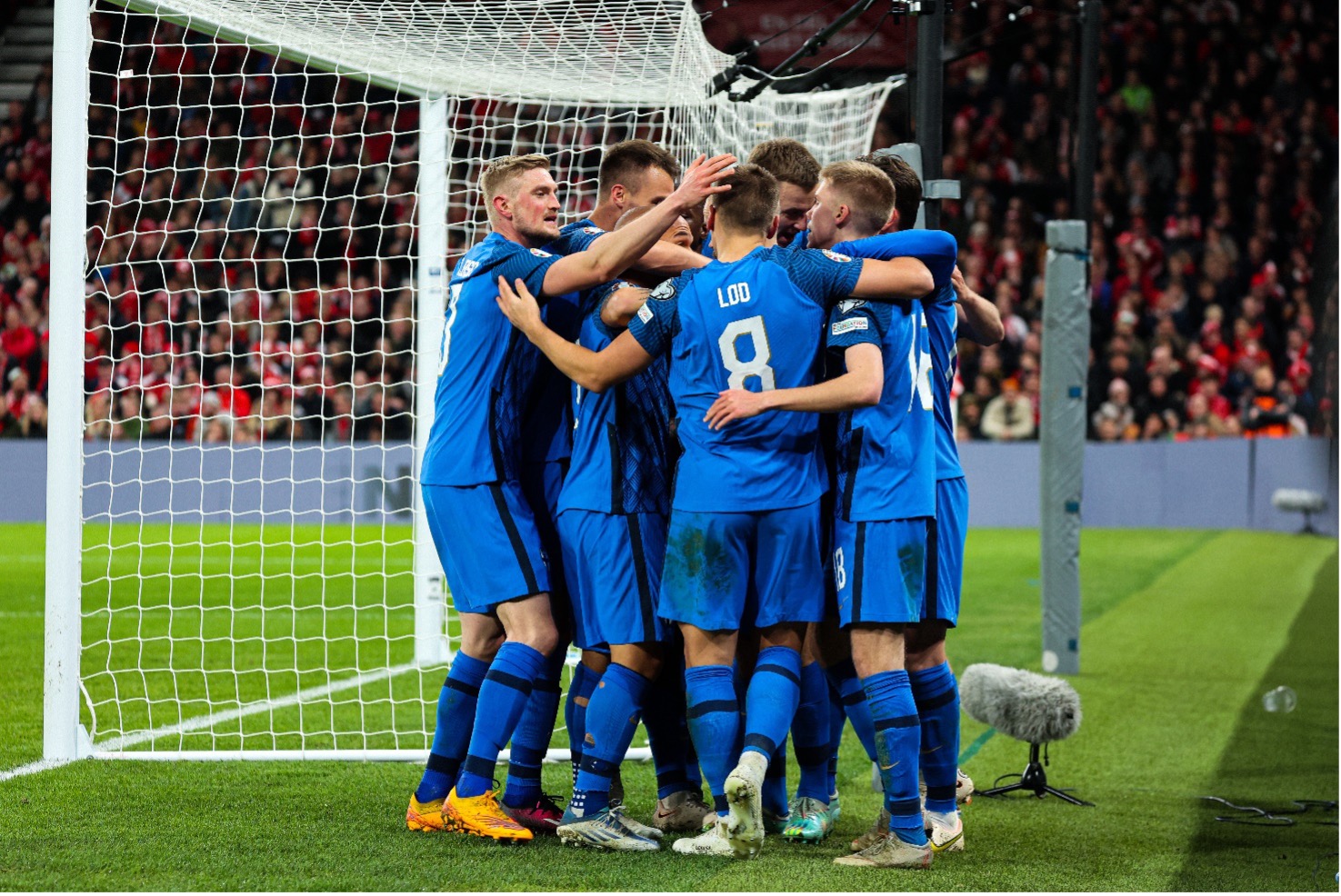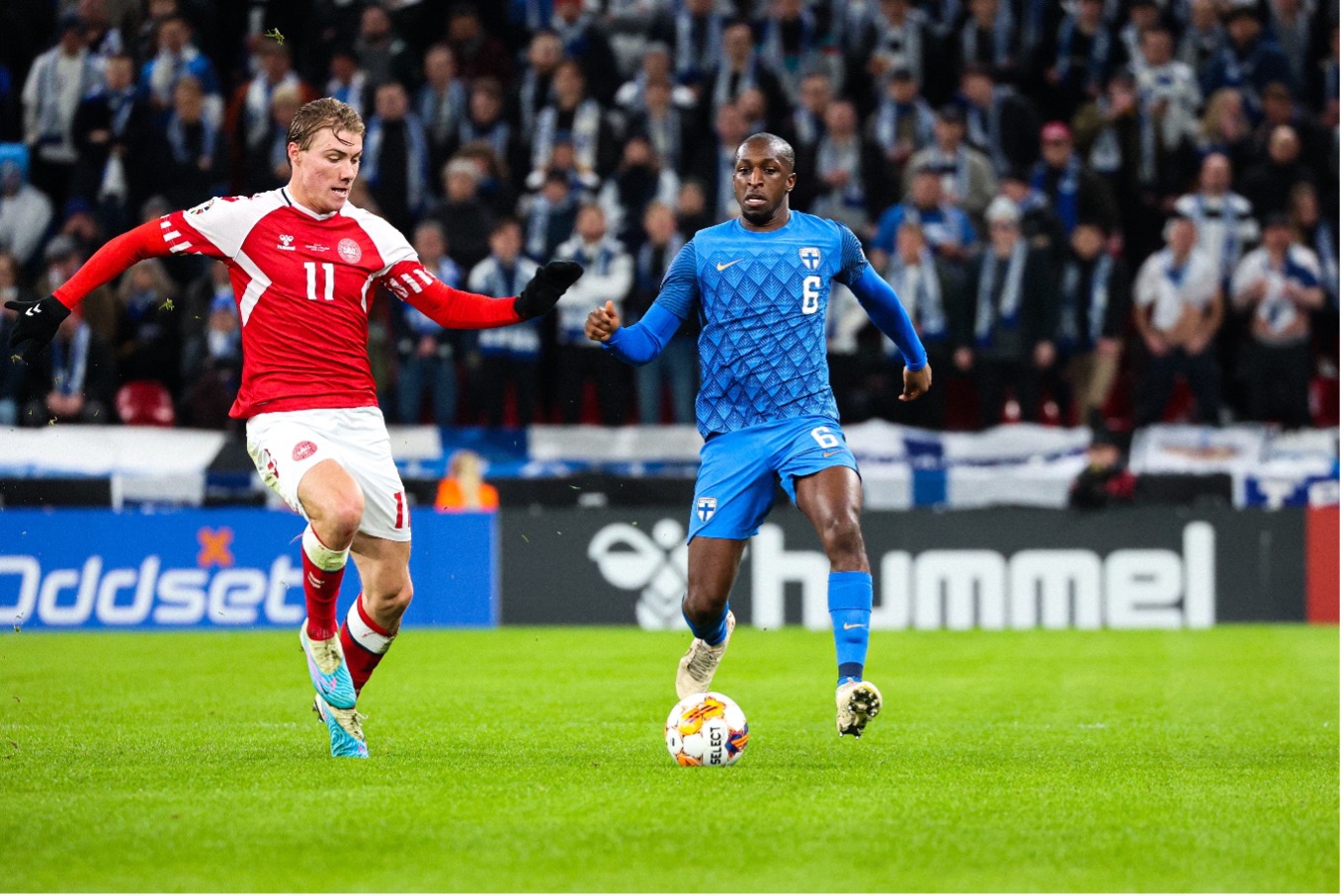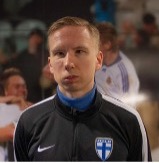09 June 2023
And how is this data used in coaching? We asked the experts at the Football Association of Finland.
Ville-Pekka Inkilä, Head of Research and Development at the Football Association of Finland, says that football data is indeed collected widely both in Finland and internationally.
“One of the most important sources of data is the matches, from which team- and player-specific data are collected. Team data includes videos and clips of goals and other events from the match. This data is very team-specific and it is nearly impossible to use it as a benchmark for other teams, clubs or countries.”
“Then there is also data about match events, which can be tied to individual players. These events include, for example, passes, shots, tackles, interceptions, dribbles, crosses, headers and duels. The data is generated by having a person watch the match in person or through a video feed and record the events in an information system.”
“As a result, a match-specific timeline with thousands of events where the actions taken by individual players near the ball can be placed is created. The data reveals, for example, how likely a player is to shoot or pass and what is their passing accuracy. It can also be used to calculate the ball possession rate of a team. Match event data forms the basis for the quantitative analysis of the match,” says Inkilä.
Expected goals as a statistical variable
What exactly can be determined with match event data?
“Expected goals, or xG, is a metric currently used widely by both national teams and clubs. Simply put, this metric indicates the quality of goal-scoring chances in a match. The distance from the goal or the angle of the shot are simple variables that can be used to statistically analyse the probability of a shot becoming a goal.
The Football Association of Finland has developed a model that allows the recording of shots and attempted goals in the digital Live match record.”
“We offer this system to clubs. It helps coaches determine the number and quality of attempted goals and how close they are to being converted into goals.”
Inkilä emphasises that xG is an increasingly popular metric in football that allows for natural comparisons.
“xG makes it possible to compare the development of the performance of teams and players relatively reasonably – for example, with regard to youth and adult national teams and clubs.”
 Photo: Jyri Sulander
Photo: Jyri Sulander
Data related to player movement and physiology
In addition to match data, data about the training, movement and physiological status of football players is collected to an increasing extent.
“GPS and heart rate sensors help measure the movement, distances, speed and heart rate of individual players. This data is most valuable when the sensors are used systematically over a long period of time. This allows for comparing the development of the athletes’ overall strain over time and their physiological response to training and playing,” says Inkilä.
“With data, the workload can be controlled even in the short term, which can help mitigate players’ susceptibility to injuries and diseases. Player data is an important tool for coaches, but the data in itself does not indicate what needs to be done. Instead, the coach must have an idea of how to train the athlete. Concrete operating models need to be prepared on the basis of the data available to ensure that the data is not only used reactively for the simple purpose of browsing it.”
In addition to using monitoring equipment, players are also asked to submit reports on their well-being and recovery.
“We use standard forms and short surveys to allow players to report how tired they feel after a match or training, for instance. Some national teams also use morning surveys about players’ quality of sleep, muscle tenderness, mood and stress. These things are monitored on a daily basis at the very top.”
Complementary data can be acquired with various attribute tests.
“Oxygen uptake rate can be measured on a treadmill and speed, strength and explosive force production are also monitored. These attribute tests provide additional insight regarding the periodic, regularly updating snapshot of the player’s overall performance capacity.”
Inkilä says that the physiological profiles of football players vary much more than in endurance sports, for example, which complicates interpreting the data.
“Individual deviations, differences and needs of players may be very significant. If there are 20 players in a team, the coach has to carefully think about how to allocate their time for the individual needs of each player.”
Are you interested in using data to enhance coaching?
Tietoevry is developing the 360° Training application as part of the Elite Sport Service Platform in cooperation with the Finnish Olympic Committee. The application enables the monitoring of athletes' physiological performance data and subjective self-assessments, providing valuable information to the coaching team as part of the team's daily routine.
The application supports the development of both individuals' and teams' performance, helping to better understand issues such as overtraining situations or overuse injuries caused by training. If you have any questions, please contact Teemu Ekola from Tietoevry or Juha Saapunki from the Finnish Olympic Committee
 Photo: Jyri Sulander
Photo: Jyri Sulander
Statistical data about Finland’s international matches
The data produced by various systems has uniform indicators, which allows for searching for differences between different countries.
“There are annual international tournaments in which the best football clubs in Finland get to participate. We have looked at the matches of academy teams and national youth teams against Danish, Dutch and Irish teams, for instance, and discovered clear differences in the match data: Finnish teams have significantly fewer shots on goal than the opponent.”
“Another major difference is related to movement. For example, the duration of 11v11 matches of 12–13-year-olds is 40 minutes. In this time, the opponent may run even a thousand metres more than the Finnish team. The amount and intensity of movement of Finnish teams is not at the same level as their international opponents in any age group,” says Inkilä.
Finland’s men’s under-21 national team manager Mika Lehkosuo’s observations on the pitch are in line with statistics
Mika Lehkosuo has had a long career in football – first as a player and, since 2004, as a manager. Before becoming the manager of Finland’s men’s under-21 national team, Lehkosuo was the manager and coach developer at Kongsvinger IL in Norway.
His experiences as a manager in Finland and Norway have been different but, based on what he has witnessed, Lehkosuo believes that there are certain differences between the countries when it comes to coaching.
“Roughly speaking, Finnish coaching is more planned and focused on tactical preparations. In Norway, the core of coaching focuses on what happens on the pitch, both in training and in matches. Everyone is as focused on training as they are on the matches.”
Different cultures are reflected in the nature of the game,” says Lehkosuo.
“The intensity of the match is higher in Norway. There are more challenges, whereas in Finland, the matches are cleaner and more tactical and, consequently, they have a slower pace.”
Lehkosuo’s experiences from Finland and Norway are in line with the fact indicated by match data: the amount of movement is lower in Finland.
Aiming at 20 hours of exercise per week
Both Lehkosuo and Inkilä believe the current situation is worrisome.
Inkilä says that the Football Association of Finland aims to investigate the amount of exercise and training young people aged under 15 involved in club activities get every week.
“If you get less than 20 hours of exercise a week, it is difficult to get a basic capacity for any type of sport.”
Lehkosuo compares the situation to the one in Norway and highlights the local school system and the clubs’ quality management systems used to guide youth activities.
“In Norway, even small town schools manage to schedule two hours of exercise every day in the curriculum. The five-tiered quality management system developed by the association guarantees the high quality of coaching young players,” says Lehkosuo.
Inkilä says that Danish and Dutch clubs cooperate closely with local schools to ensure that young players have the opportunity to get an adequate amount of supervised training.
How can this problem be solved in Finland?
“Homes and schools need to get involved in addition to clubs. Parents have a major role in determining how much free time the family spends on exercising together. Schools can provide additional opportunities for exercise during the school day. This challenge can be overcome through cooperation between schools, homes and clubs,” says Inkilä.
How data benefits top athletes? Check these articles!
Data supports a multi-professional coaching team
The Finnish Olympic Committee: Supporting elite sport coaching with data management
Interviewees in the article
 |
 |
|
Ville-Pekka Inkilä |
Mika Lehkosuo |
Learn more how data benefits coaching!
Elite sports and data analytics in the Vuokatti olympic training centre